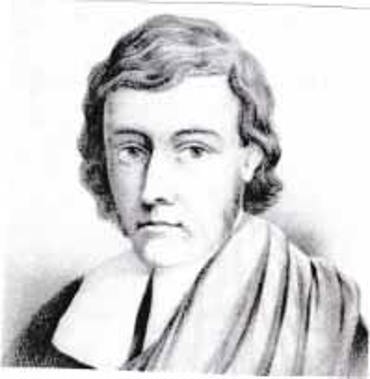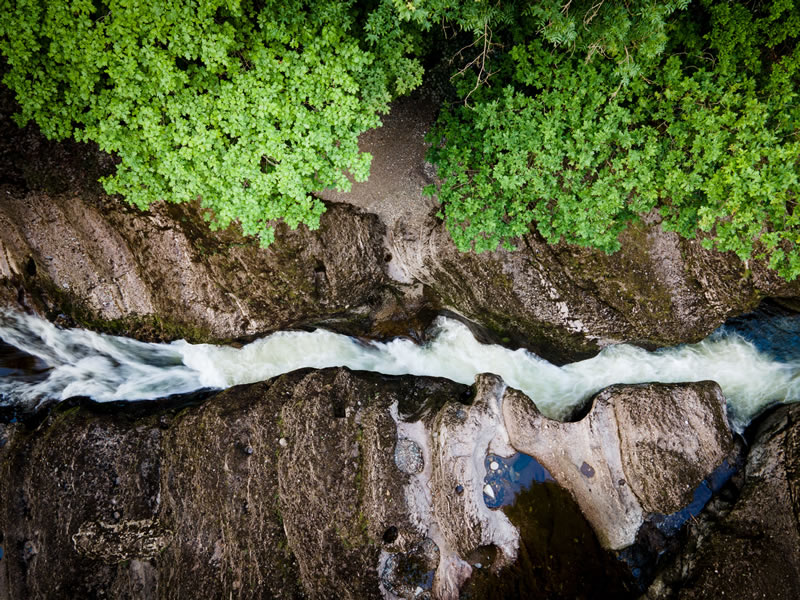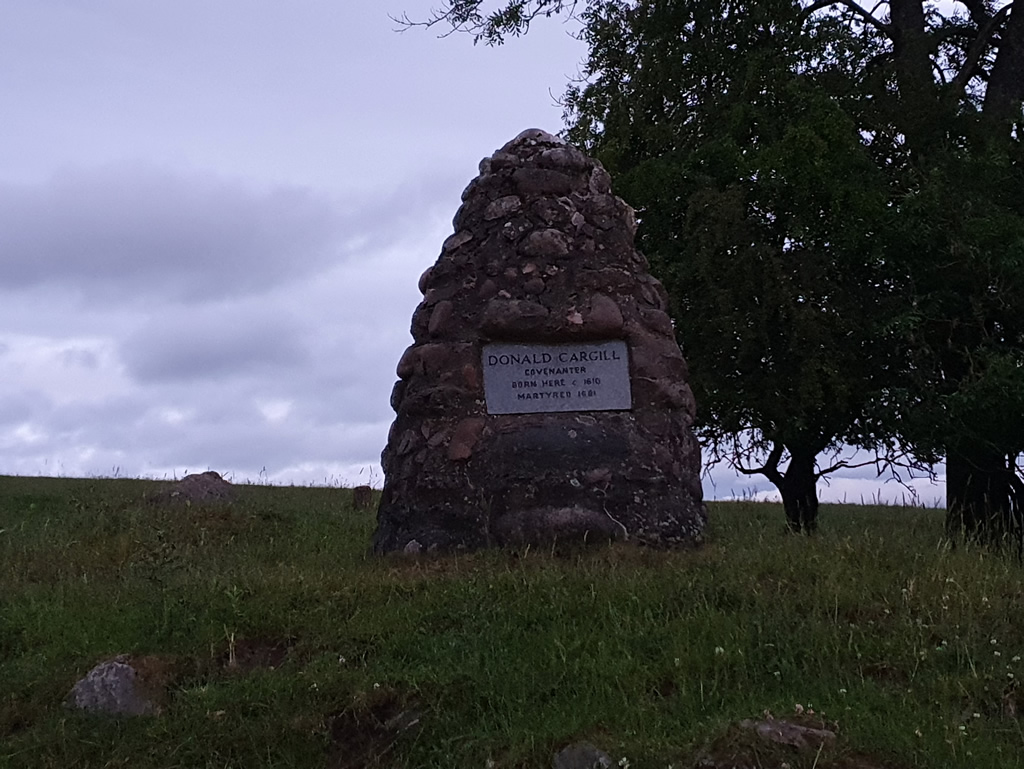Our Heritage Timeline
Donald Cargill (c1610 - 1681)

Donald Cargill (c1610 - 1681)
A tale of rebellion, martyrdom and white water.
A walk along the banks of the River Ericht takes you to Cargill’s Leap, about a quarter of a mile up from the Brig o’ Blair. There, at an area of the river known as the Keith Falls, is a viewing platform which allows visitors to look down on this treacherous part of the river. An information board explains that it was here that local man Donald Cargill leapt across the river to escape from pursuing government troops.
 Cargill's Leap - Photo Courtesy of Graeme Berry
Cargill's Leap - Photo Courtesy of Graeme Berry
In 1638 the National Covenant, a document pledging resistance to changes being made by Charles I, was drawn up. Supporters of the Covenant were known as Covenanters. Donald Cargill was an ardent Covenanter.
Charles II continued to impose Episcopalian forms of worship in Scottish Churches. An act of Parliament required churches to hold services of thanksgiving for the restoration of Charles II as King.
In 1662 Donald Cargill disobeyed this order and was dismissed. He continued to preach at conventicles, secret gatherings of worshippers, often held in the open air. Government troops hunted him wherever he went.
Around 1665 Donald Cargill returned to Blairgowrie, possibly to visit his family. He was pursued by a party of government dragoons led by John Graham of Claverhouse. Knowing the area well, Donald made his way to the River Ericht and managed to escape capture by leaping across the river. Donald Cargill continued to preach and to support the Covenanters’ cause.
Video credit - Graeme Berry/Isla Aerial Surveying & Imaging
This is the life story of Donald Cargill.
DONALD CARGILL (c.1610 – 1681)
Donald Cargill was born at Hatton of Rattray, a farm about a mile north of Rattray, Perthshire. He was the eldest son of Laurence Cargill of Bonnytoun, Rattray, and Marjory Blair. The Cargill family was well respected locally.
Having been educated at Aberdeen Grammar School and the Universities of Aberdeen and St Andrew’s, he became Minister to the Parish of Barony in Glasgow in 1655, where he remained for the next seven years.
Donald Cargill was strongly against a move to impose Episcopalian worship into the Scottish Church. Episcopalian churches were governed by bishops. In Scotland most churches were governed by representative assemblies of elders.
In 1679 he was wounded at the Battle of Bothwell Bridge which was between Royalists and Covenanters. He escaped to the Netherlands to recover. By the following year, he was back in Scotland and continuing to preach.
Through the issue of documents like The Queensferry Papers and the Sanquhar Declaration, in association with Richard Cameron, he accused the authorities of tyranny and oppression and called upon people to defend themselves and their rights. Following Richard Cameron’s death in July 1680 at the hands of the dragoons, a substantial reward was offered for Donald Cargill’s capture.
He was finally arrested at Covington Mill in Lanarkshire and taken to Edinburgh for trial. Inevitably, he was sentenced to death. On 27th July 1681 at the Mercat Cross in Edinburgh, Donald Cargill was hanged and beheaded. As was the custom, his head was fixed on the Netherbow in Edinburgh.
His life is remembered locally and elsewhere. A plaque in his memory may be seen in Rattray Parish Church. Cargill Place in Rattray is named after him and at Hatton there is a cairn with a plaque:
Photo of Donald Cargill Cairn
The Bible he carried to the scaffold is on display at the University of St. Andrews. A statue of Donald Cargill is in the Church of the Holy Rood Kirkyard close to Stirling Castle. His name appears on the Covenanters’ Memorial near Maybole, South Ayrshire.
How to find Cargill's Leap:
From the Riverside Car Park in Blairgowrie walk west alongside the river (going up river) to the end, turn left up the stairs onto another path called Oakbank Road. Turn right along past the fence and continue along the path. You can turn right to the salmon viewing platform then return to the path to continue a short way where you come to a fork on the right. Follow this right hand fork and you will come to the viewing point for Cargill's Leap.
To learn more watch YouTube video: The Main Things: The Story of Donald Cargill - Stories of the Covenant.
Also click here to learn more about The Covenanters
Previous Page

